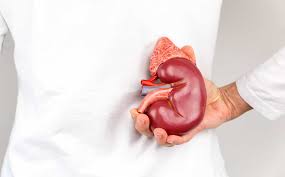A treatment combination with Yervoy (ipilimumab) plus Opdivo (nivolumab), compared with standard-of-care therapies, significantly improved 12-month survival in patients with non-clear cell renal cell carcinoma (nccRCC; a type of kidney cancer), according to data presented during the 2024 ESMO Congress.
The presentation at ESMO highlighted findings from the phase 2 SUNNIFORECAST trial, which included a total of 309 patients. The Yervoy-Opdivo combination group included 157 patients and the standard-of-care group included 152 patients. The median ages were 61.4 and 64 years in the respective groups. Among the total amount of patients in the study, 70.9% were male, 52.4% had a full Karnofsky performance score (meaning they were able to independently complete daily tasks) and 76.7% had undergone prior surgery. The median time since initial diagnosis among all patients enrolled was 30.9 months.
Study highlights:
- A treatment combination of Yervoy and Opdivo significantly improved survival rates in patients with non-clear cell renal cell carcinoma (nccRCC) compared to standard-of-care therapies.
- Patients receiving the combination therapy had a higher 12-month overall survival rate (86.9%) than those receiving standard of care (76.8%).
- The combination therapy was generally well-tolerated, with manageable side effects, with most of the side effects of any severity occurring in the standard-of-care group.
“This is the first prospective randomized trial which compared dual checkpoint inhibitor combination therapy with the actual SOC in nccRCC,” Dr. Lothar Bergmann, deputy medical director in the Department of Internal Medicine at J.W. Goethe University in Frankfurt, Germany, said during the presentation.
Survival Outcomes Among Patients With nccRCC
At a median follow-up of 24.3 months, the 12-month overall survival (OS; time patients live, regardless of their disease status) rate was 86.9% among the 157 patients who received the Yervoy-Opdivo combination. The 12-month OS was 76.8% among the 152 patients treated with standard of care. The six-month OS rates were 94.7% versus 90%, respectively and the 18-month rates were 76.6% versus 69.1%, respectively. The median OS was 42.4 months in the combination group compared with 33.9 months in the standard-of-care group.
“A significant difference [in 12-month OS rate was observed] in favor of the combination arm,” Bergmann said. “The standard of care for most patients [in the study] was [tyrosine kinase inhibitor (TKI)] monotherapy and only 17% of patients received a TKI/IO combination in this group.”
The primary goal of the study was the 12-month OS rate. Key secondary goals included OS, six- and 12-month OS rates, progression-free survival (PFS; time patients live without their disease worsening or spreading), objective response rate (ORR; percentage of patients whose tumors shrunk or disappeared), time to progression, safety and quality of life.
In terms of PFS, the median value in the combination arm was 5.52 months versus 5.65 months in the standard-of-care group. The respective ORRs were 32.8%, with an 8% complete response (CR; complete tumor disappearance) rate, versus 19.6%, with a 1.6% CR rate. The ORR was higher with the combination versus standard of care in patients with papillary (29.2% versus 21%), non-papillary (37.7% versus 18.2%) and chromophobe (25.9% versus 11.1%) histologies, respectively.
Side Effects Experienced Within the Study
Regarding safety, the most common side effects of any severity in the combination and standard of care groups included skin reactions (48.4% versus 74.2%), fatigue (42.9% versus 63.7%), diarrhea (21% versus 45.1%), pruritus (itching; 25% versus 2.8%) and nausea (20.6% versus 31.5%). The most common grade 3 (severe) or 4 (life-threatening) side effects included increased alanine aminotransferase levels (high liver enzyme levels; 5.7% versus 0%), fatigue (3.8% versus 8.4%) and diarrhea (3.2% versus 4.9%). Rates of side effects of any severity were generally higher in the standard of care group versus the combination group.
Patients in the combination group went on to receive subsequent second (63.7%), third (28.7%) and fourth (11.5%) lines of therapy. Patients in the standard-of-care group went on to receive these lines of therapy at rates of 55.9%, 13.2% and 9.2%, respectively.
“The randomized SUNNIFORECAST trial underlines a relevant clinical benefit of the combination [of Yervoy and Opdivo] in nccRCC and may be a new standard in these entities,” Bergmann said. “Further data in the study of these rare diseases are needed in the future.”
For more news on cancer updates, research and education, don’t forget to subscribe to CURE®’s newsletters here.



